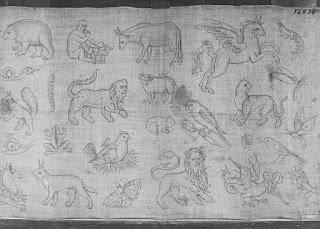 I'm behind on projects that don't include my kids and Halloween, so I'm throwing another past project up. These are the cloaks that were originally made to go over the white outfits I posted last. Totally a case study for why picking the fabrics and design for an event 6 months before hand can be tricky. I was cold and wet and shivering in winter when I decided fully lined tunics and wool cloaks would be a great idea for wear in late June. It made for outfits that are fabulous, but weren't able to be worn as intended.
I'm behind on projects that don't include my kids and Halloween, so I'm throwing another past project up. These are the cloaks that were originally made to go over the white outfits I posted last. Totally a case study for why picking the fabrics and design for an event 6 months before hand can be tricky. I was cold and wet and shivering in winter when I decided fully lined tunics and wool cloaks would be a great idea for wear in late June. It made for outfits that are fabulous, but weren't able to be worn as intended.These are half circle cloaks with machine embroidery, hand applique, stenciled griffins, couched cord, beads, wooden bead frames, and a couple of hundred strands of freshwater pearls. The motto of "Tridentata Gloriam" comes from our Kingdom song and is a reference to Artemisia being named for Artemisia Tridentata-- common sagebrush. I embroidered the letters on felt using my embroidery machine and then appliqued them in place. The griffins are done with a stencil from Wall Masque Stencil Co on Etsy. I had purchased it awhile back just because it was two griffins segreant (rampant, but with added wings) and I liked it. I just happened to be perfect for the project. I had considered block printing it. I sort of wish I had, just because it would have been a lot quicker than doing the highly detailed stencil, but it sure turned out nice this way. The wool is a heavy boucle and just gulped the paint. I used Versatex again, and went through three 4 oz jars on the two cloaks.
There are about 75-ish strands of 7-9mm potato shaped freshwater pearls on each cloak that are couched in place and then I took a gold colored soutache cord and couched it to the side of the pearls to help them pop a bit as well as to help straighten up the lines a bit. Using the real pearls sacrificed uniformity. Between each Tridentata Gloriam on the curve, there is a wooden quatrafoil bead frame with large beads in them, to break up the text. Each cloak is lined in a black and gold ecclesiastical brocade as I knew they would be draped over the back of thrones and seen from the front as often as the back.
Obviously, not a difficult thing to sew as it is just a half circle. Just a lot of sewing and embellishment.















